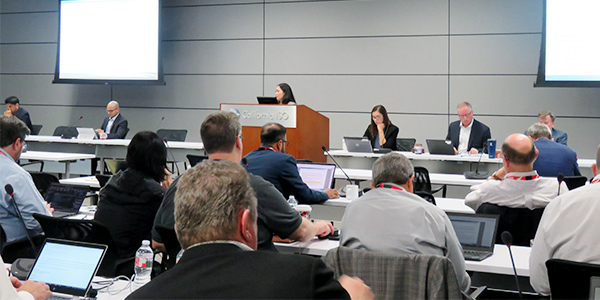By Hudson Sangree
FOLSOM, Calif. — During a daylong planning session Monday, CAISO engineers examined options for transmission upgrades to resolve reliability concerns and reduce natural gas generation’s role in meeting local capacity requirements.
The ISO is in the second of its three-phase 2019/20 transmission planning process (TPP). On Monday, it held the third of four stakeholder meetings to go over its findings and proposals. The goal is to provide the Board of Governors with a transmission plan to approve by March.
The annual TPP looks ahead 10 years, assessing CAISO’s grid based on economic, policy and reliability considerations.
“In addition to those, we’re also doing this sidebar where we’re looking at potential [opportunities] for reducing reliance on gas-fired generation in local capacity areas,” said Neil Millar, CAISO’s executive director of infrastructure development. Reducing dependence on gas can create a need for economically beneficial transmission projects, he said.
California has a legal mandate to dramatically reduce its greenhouse gas emissions and increase its reliance on renewable energy sources by 2030. The 2019/20 TPP’s planning horizon extends through 2029.
Over the course of several hours, engineers presented the results of their detailed examination of the state to identify areas and subareas where transmission upgrades could cut local capacity requirements (LCRs) and eliminate or reduce the need for gas-fired generation. The long-term LCR assessment began in 2018.
In Southern California, billions of dollars in proposed projects could potentially reduce thousands of megawatts of LCRs, though planners questioned the cost-benefit ratio of many large projects and the potential adverse impacts on the sprawling, interconnected grid in Los Angeles and San Diego counties.
In Northern California, spending $30 million on the Tesla-Delta switchyard 230-kV line reconductor in the Contra Costa subarea would reduce the need for gas to meet local capacity needs from 1,207 MW to 299 MW, CAISO planners found.
In the Tesla-Bellota subarea of Stockton, reconductoring about 200 miles of overloaded 115-kV lines, at a cost of $143 million, could completely eliminate the need for 365 MW of gas generation to meet local demand.
Both those projects, and many others on the list, were submitted by CAISO.
Reliability Projects
Planners also presented proposals for reliability projects costing less than $50 million each that require only the approval of CAISO executives. Projects that cost more than $50 million require board approval and will be included in the draft transmission planning report due Jan 31.
The proposals are intended to meet NERC standards, Western Electricity Coordinating Council criteria or ISO planning standards, which can be stricter than NERC or WECC requirements.
Pacific Gas and Electric, for example, has proposed installing a 230/115-kV transformer bank in the San Francisco Bay Area, at an estimated cost of $3 million to $6 million to prevent overloads and meet NERC reliability requirements.
PG&E has also proposed reconductoring 9 circuit miles of the overloaded 115-kV Wilson Oro Loma line in the Fresno area to meet NERC reliability standards, with a price tag of $11.3 million to $22.7 million.
Written stakeholder comments on the presentations in Monday’s meeting are due Dec. 2.




